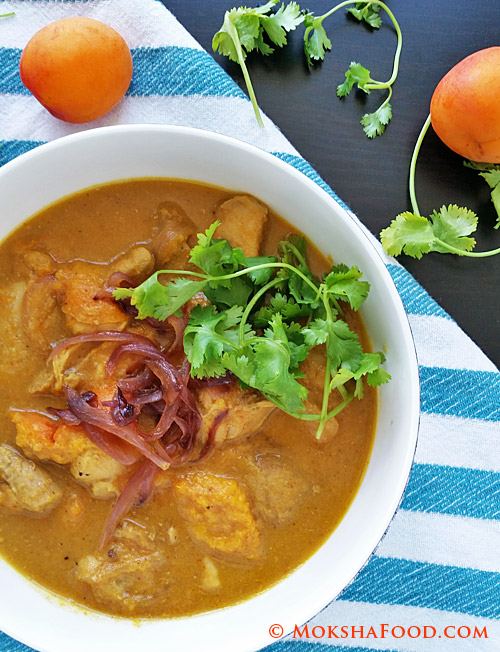Apricot Chicken Curry Indian Style!

Summer is finally here and with that came farm fresh fruits and vegetables. Apricots have began to flood the market. After chomping down on some fresh apricots. I have been torn between deciding to make a sweet or savory preparation with it. Finally the curiosity of a fruity chicken overcame me and that became our dinner last night. Apricot Chicken is a mild Moroccan tagine which I have adapted to an Indian Curry style. The tagine recipe has ingredients like onions, garlic, cumin and coriander which are common elements in an Indian curry too. I also happened to read that Kashmiris, who inhabit the north of India, have also been cooking apricots in a curry style. I didn't have access to their authentic recipes so just worked around my usual chicken curry recipe. Apricot Chicken Curry turned out fruity, creamy and delicious. It even tasted much better after a few hours of resting time. This is an easy recipe which incorporates apricots in your usual chicken curry. You can als...




